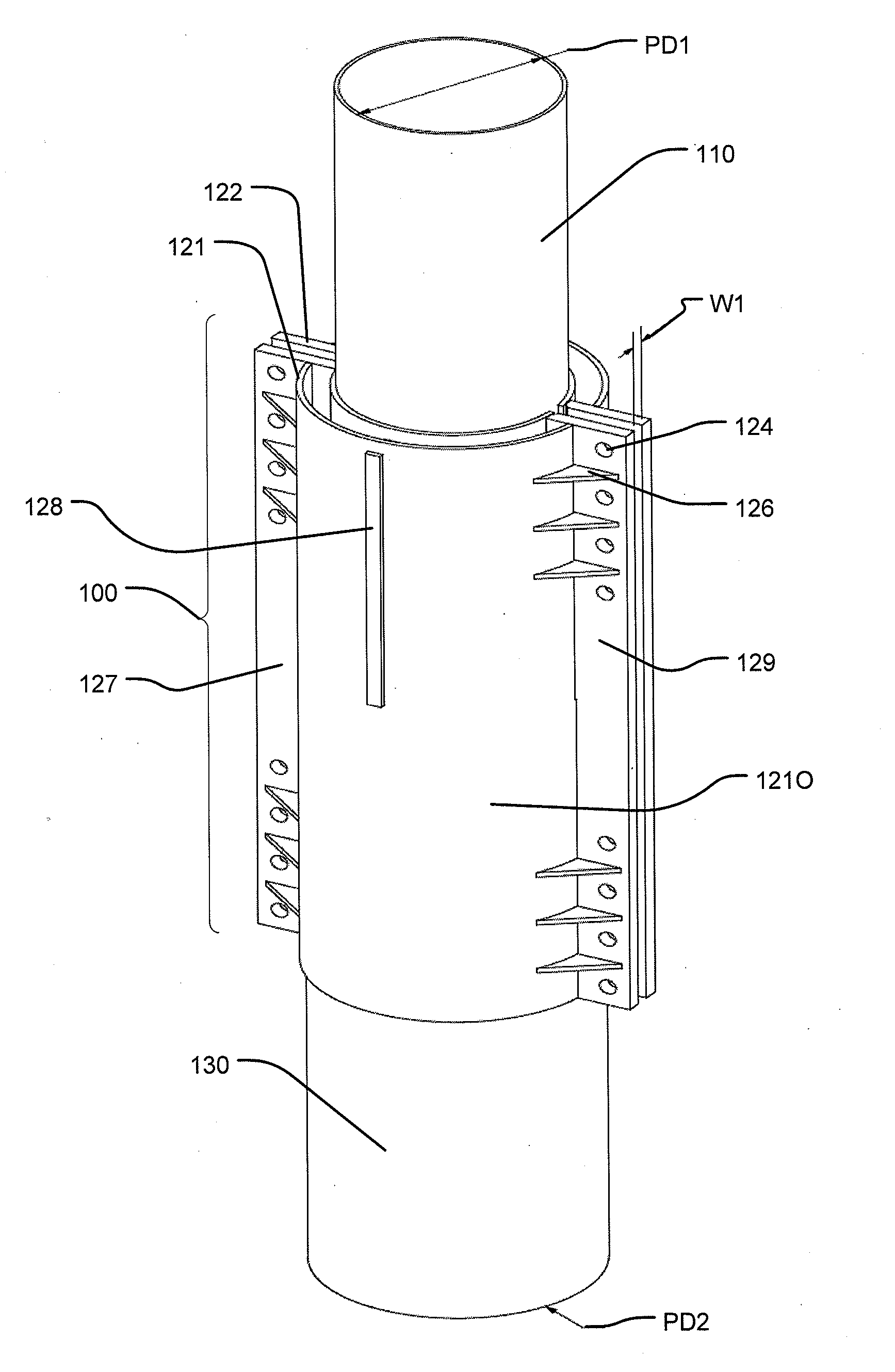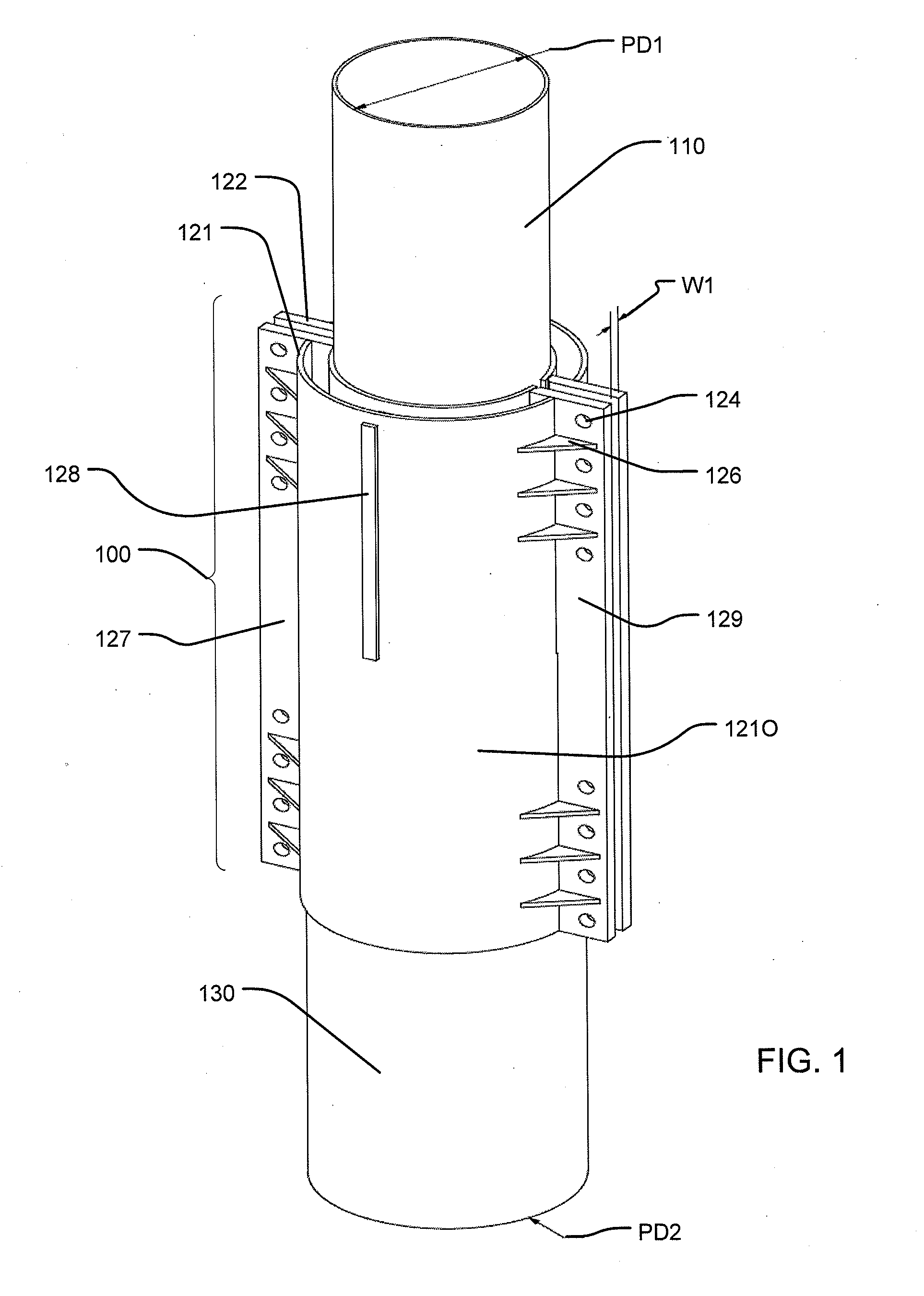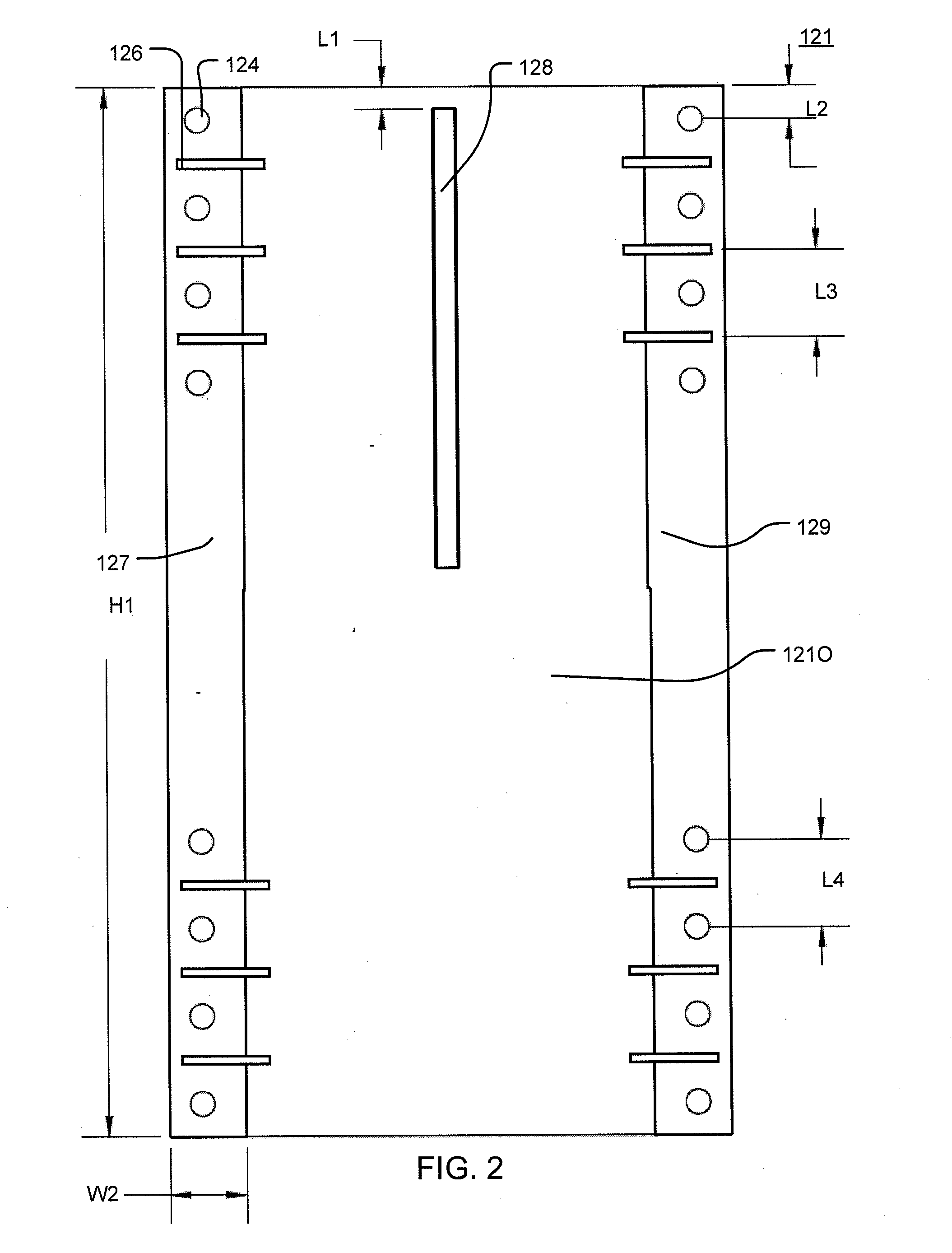Clamp device for telescopic poles
- Summary
- Abstract
- Description
- Claims
- Application Information
AI Technical Summary
Benefits of technology
Problems solved by technology
Method used
Image
Examples
example
[0037]According to one, non-limiting example of the disclosure, the clamp 100 and the telescopic tower pole portions 110, 130 may be constructed from a material such as, for example, steel, which may have the following non-limiting examples of grades, thicknesses and dimensions (Tables 1-4).
TABLE 1Upper Tower Pole Portion 110Outer diameter PD124in. (inches)Wall thickness0.375in.Material yield35ksi. (kilopound-per-in.2)Section modulus161.8586in.3Moment of inertia1942.283in.4Allow bending moment3738.934k-in. (kilopound-per-in.)
TABLE 2Lower Telescopic tower pole portion 130Outer diameter PD230in.Wall thickness0.5inMaterial yield35ksiSection modulus336.1479in.3Moment of inertia5042.168in.4Allow bending moment7765.017k-in.
TABLE 3Upper Clamp Portion 121UInner diameter of shell 121O30in.Inner diameter of shell 121I24in.Wall thickness of shell 121O0.375in.Wall thickness of shell 121I0.375in.Material yield36ksi.Section modulus407.2074in.3Moment of inertia shell 121O4127.649in.4Moment of iner...
PUM
 Login to View More
Login to View More Abstract
Description
Claims
Application Information
 Login to View More
Login to View More - R&D
- Intellectual Property
- Life Sciences
- Materials
- Tech Scout
- Unparalleled Data Quality
- Higher Quality Content
- 60% Fewer Hallucinations
Browse by: Latest US Patents, China's latest patents, Technical Efficacy Thesaurus, Application Domain, Technology Topic, Popular Technical Reports.
© 2025 PatSnap. All rights reserved.Legal|Privacy policy|Modern Slavery Act Transparency Statement|Sitemap|About US| Contact US: help@patsnap.com



